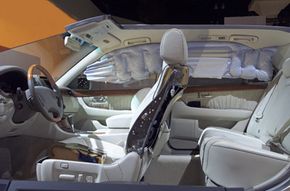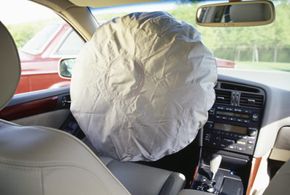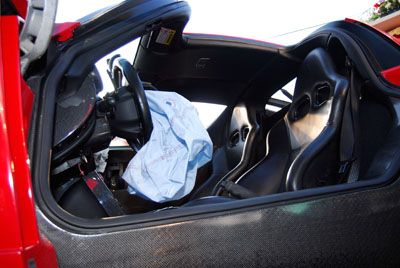The airbag was a major advance in automotive safety when it was first introduced in the 1970s. As you're probably aware, their use has only grown. Since the late 1990s, all vehicles produced in the United States must have both driver and passenger side front airbags. Today, we also have side curtain airbags, tubular airbags, even knee airbags. Some companies have even started testing exterior airbags to protect pedestrians. It seems as if we're not that far from a car's interior bursting into one giant inflated cushion on impact. Sounds good, but tradeoffs abound: How much extra weight and cost can you build into a new car?
To answer this question, you must first understand how airbags work. The basic front airbag is designed to slow the acceleration of a car's occupants during impact, reducing the forces acting on them and preventing injuries. Side airbags do the same thing, but they protect occupants from side impacts. Curtain or tubular airbags protect the head from slamming into the side; while airbags mounted in the seat or the door protect the pelvis.
Advertisement
Other airbags in development generally help to hold the occupants safely during crashes. Take the knee airbag, for example. Many cars have large padded knee bolsters that protect legs from crash impacts. However, a sudden stop sends a person's legs flinging forward. When they strike something, the force is concentrated on one area of the leg. The result can be a severe leg fracture and damage to the hips or pelvis. A knee airbag either replaces the bolster or sits behind it. On impact, the airbag inflates and presses the occupants' knees back against the lower part of the seat, keeping them safely in place. Other new airbag designs keep people from sliding down in their seats, or shift an occupant's position away from the impact [source: Moore].
Protection is a good thing, especially while driving; however, how much is too much? Can a car actually be too safe to drive? Let's find out on the next page.
Advertisement





